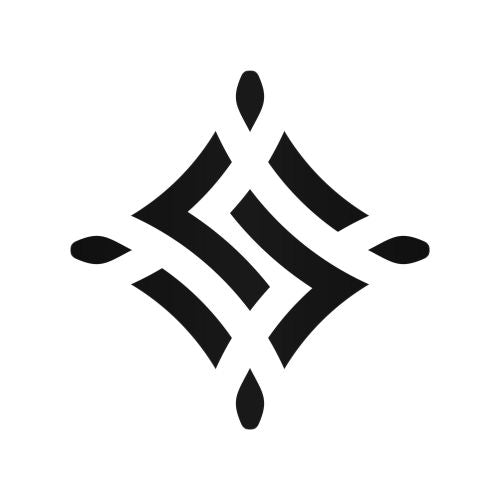National Mudmee Silk Patterns
National Mudmee silk patterns originate from the traditional culture of local villagers, inspired by everyday surroundings. These patterns can be categorized into three main stories based on their influences:
Patterns from Religious Beliefs and Traditions
- Prasat Tower Pattern: Represents a castle, a place for those with merit, like kings and monks. Villagers weave this pattern for offerings, considering it high quality and worthy of respect.
- Lai Bai Sim: Symbolizes the sacred church or Sim, housing a Buddha image. Villagers believe weaving this pattern brings merit and guarantees entry into heaven.
-
 Naga Pattern: Represents the Naga, the king of snakes, symbolizing abundance. Weaving this pattern is seen as a symbol of prosperity.
Naga Pattern: Represents the Naga, the king of snakes, symbolizing abundance. Weaving this pattern is seen as a symbol of prosperity.
-
 Dhamma Pattern: Represents the pulpit where monks preach. Villagers weave this pattern for merit-making events or special festivals.
Dhamma Pattern: Represents the pulpit where monks preach. Villagers weave this pattern for merit-making events or special festivals.
- Sema Leaf Pattern: Symbolizes the boundary marker of temples, representing great merit. Weaving this pattern brings rewards in the form of spiritual merit.
Animal-Influenced Patterns
These patterns are inspired by animals, both auspicious and those commonly seen in everyday life.
-
 Peacock Pattern: Represents beauty and abundance, a common design in Mudmee since ancient times.
Peacock Pattern: Represents beauty and abundance, a common design in Mudmee since ancient times.
-
 Butterfly Pattern: Symbolizes beauty and peace. Wearing this pattern is believed to give one a personality similar to that of a butterfly.
Butterfly Pattern: Symbolizes beauty and peace. Wearing this pattern is believed to give one a personality similar to that of a butterfly.
- Jonfon Pattern (Mongoose): Symbolizes patience and strength. The mongoose can defeat venomous snakes, representing resilience.
-
 Fish Fang Pattern: Inspired by the beauty of fish fangs seen during cooking. Represents creativity drawn from everyday life.
Fish Fang Pattern: Inspired by the beauty of fish fangs seen during cooking. Represents creativity drawn from everyday life.
- Scorpion Pattern: Represents intimidation against enemies and showcases skill in detailed craftsmanship.
-
 Chicken Wing Pattern: Inspired by the spread of chicken wings, representing uniqueness and pride.
Chicken Wing Pattern: Inspired by the spread of chicken wings, representing uniqueness and pride.
- Horse Pattern: Horses symbolize patience and are seen as loyal companions. This pattern reflects these qualities.
-
 Lion Pattern: Represents power and fortune. It is often woven for those who are highly respected.
Lion Pattern: Represents power and fortune. It is often woven for those who are highly respected.
- Tiger Stripes: Symbolizes reverence, dignity, and respect. The tiger pattern is woven to symbolize authority within the family.
- Elephant Pattern: Elephants symbolize greatness, abundance, and happiness. Wearing this pattern is believed to bring prosperity.
-
 Python Pattern: Represents strength and maturity. Often worn by married women, symbolizing their readiness to face challenges.
Python Pattern: Represents strength and maturity. Often worn by married women, symbolizing their readiness to face challenges.
Plant-Influenced Designs
These patterns are inspired by local agriculture, which plays a vital role in the villagers' daily lives.
-
 Pine Tree Pattern: Represents order and discipline, similar to the neat and orderly arrangement of pine tree leaves.
Pine Tree Pattern: Represents order and discipline, similar to the neat and orderly arrangement of pine tree leaves.
-
 Pudson Flower Pattern: Inspired by various Thai flowers, symbolizing goodness and used to show respect.
Pudson Flower Pattern: Inspired by various Thai flowers, symbolizing goodness and used to show respect.
- Pak Waen Flower Pattern: Represents harmony, generosity, and meticulousness, inspired by the small flowers growing along water bodies.
- Sesame Pattern: Sesame plants symbolize auspiciousness. The small beads represent unity, sometimes referred to as the starburst pattern.
-
 Betel Nut Pattern: Represents patience and abundance. The betel nut tree is close to the people's daily lives and is used in various Mudmee patterns.
Betel Nut Pattern: Represents patience and abundance. The betel nut tree is close to the people's daily lives and is used in various Mudmee patterns.
- Thorn Pattern: Represents the four elements: earth, water, wind, and fire. It symbolizes refinement and detail.
-
 Khayang Vegetable Tree Pattern: Inspired by the aromatic khayang vegetable, often seen in the northeastern provinces. The color of the cloth resembles a field of khayang vegetables.
Khayang Vegetable Tree Pattern: Inspired by the aromatic khayang vegetable, often seen in the northeastern provinces. The color of the cloth resembles a field of khayang vegetables.
Purchase Mudmee Silk
Interested in buying silk for luxury dresses? Visit www.silkket.com for a wide range of silk fabrics, including plain colored silk, Mudmee pattern silk, and more. We pride ourselves on meticulous quality and craftsmanship from expert technicians.
The shop aims to preserve this beautiful culture. For assistance in choosing products or for more advice, contact the Silkket store team via "LineOA: @chobmai". Thank you for your interest, and we look forward to serving you.
Thank You Sources:
- https://thaiunique.wordpress.com/
- https://museum.srru.ac.th/materialtype?material_type=1
- Surin Silk Cultural Ties

